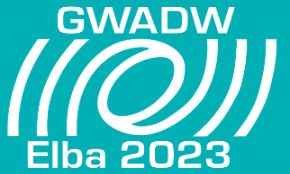Speaker
Description
The Einstein Telescope (ET) is a third generation gravitational wave detector, combining a low-frequency (LF) and a high-frequency (HF) laser interferometer. Cryogenic operation of ET-LF in the temperature range of 10-20 K is essential to suppress the suspension thermal noise (STN), which dominates the detection sensitivity at frequencies below 10 Hz. The minimization of the STN requires suspension materials with high thermal conductivity and low mechanical dissipation at cryogenic temperatures. Motivated by the exceptional heat conductivity of static He-II and a presumably low dissipation, a new marionette suspension design with a He-II filled titanium tube has been proposed and, theoretically, shown to meet the ET-D sensitivity requirements.The concept includes open fundamental questions that can only be addressed by measurements of the mechanical Q-factor, providing crucial insights in the dissipative behaviour of such a system. Hence, an experimental setup for cryogenic Q-factor measurements is being planned.The scope of experiments and a first conceptual design are being presented here. Beside the Q-factor measurements, a main focus of this facility is given to R&D on the integration of the He-II system and the mechanical interface to the payload in view of noise isolation.

